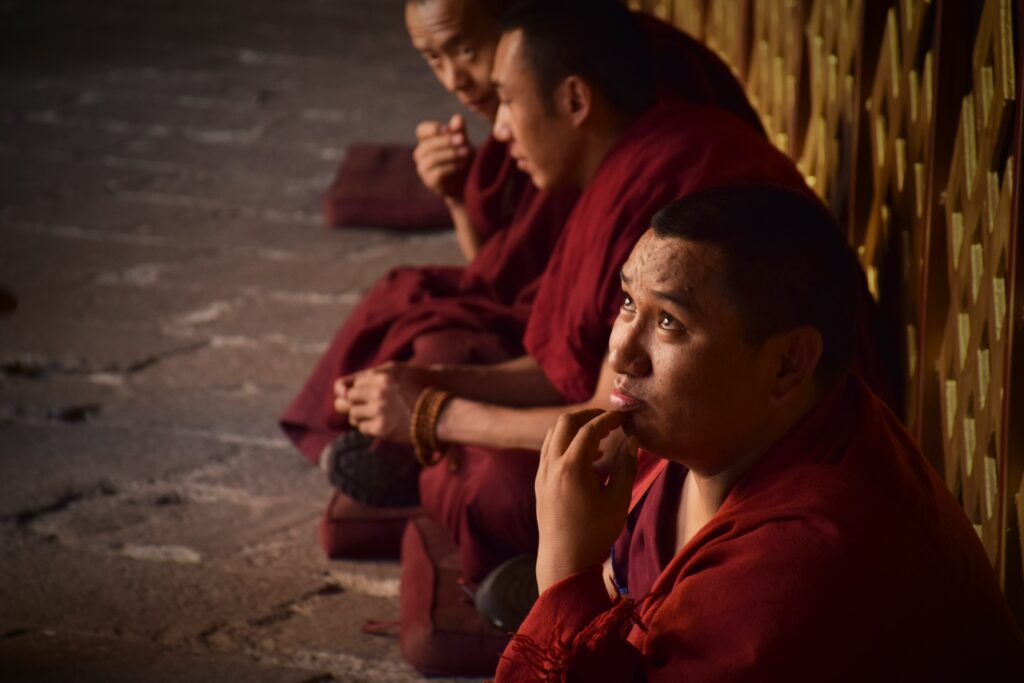The historical Buddha, Siddhartha Gautama, was very much a realist. He accepted that pleasurable situations and circumstances would always come to an end and that unpleasurable things would always come around sooner or later. The word used for this reality is dukkha, and it is the core of the Four Noble Truths.
The Four Noble Truths
The first truth is the recognition of dukkha. In our lives, we crave that which we do not have, and we cling desperately to that which we do have (including people and relationships). We think, “if I just got that promotion,” or “if I just lived in a bigger house,” or if “I were with him/her my life would be so much better.” Wanting such things isn’t bad, but craving them means that we suffer. This is where the Second Noble Truth, samudaya, comes in: our craving becomes an obsession, and we build up a false vision of our lives with this or that thing or person; if we finally get that which we crave, we often find that it isn’t all that we thought it would be. Then the cycle begins anew, over some other person or thing.
We cling to those things about which we care, wanting things never to change, never to end, but the reality is that things will always change and will always end. The reality of the human condition is that we and everything around us are constantly changing, and nothing upon which we can lay our hands will bring us perfect and undying satisfaction.
The Third Noble Truth, niroda, deals with the cessation of dukkha. By putting a stop to our craving and clinging, we will attain nirvana, a state of peace and freedom. The Fourth Noble Truth, magga, gives us the path to the cessation of (or liberation from) dukkha. The Fourth Noble Truth is divided into eight steps and is known as the Noble Eightfold Path.
The Eightfold Path
Editor’s note: The descriptions below are taken from Wikipedia. If we keep shooting for “perfect,” we’ll never have “done.” We’ll come back to this!
- Right Resolve or Intention: the giving up of home and adopting the life of a religious mendicant in order to follow the path; this concept aims at peaceful renunciation, into an environment of non-sensuality, non-ill-will (to loving kindness), away from cruelty (to compassion). Such an environment aids contemplation of impermanence, suffering, and non-Self.
- Right Speech: no lying, no rude speech, no telling one person what another says about him to cause discord or harm their relationship.
- Right Conduct or Action: no killing or injuring, no taking what is not given, no sexual misconduct, no material desires.
- Right Livelihood: no trading in weapons, living beings, meat, liquor, and poisons.
- Right Effort: preventing the arising of unwholesome states, and generating wholesome states, the bojjhagā (Seven Factors of Awakening). This includes indriya-samvara, “guarding the sense-doors”, restraint of the sense faculties.
- Right Mindfulness (sati; Satipatthana; Sampajañña): “retention”, being mindful of the dhammas (“teachings”, “elements”) that are beneficial to the Buddhist path. In the vipassana movement, sati is interpreted as “bare attention”: never be absent minded, being conscious of what one is doing; this encourages the awareness of the impermanence of body, feeling and mind, as well as to experience the five aggregates (skandhas), the five hindrances, the four True Realities and seven factors of awakening.
- Right samadhi (passaddhi; ekaggata; sampasadana): practicing four stages of dhyāna (“meditation”), which includes samadhi proper in the second stage, and reinforces the development of the bojjhagā, culminating into upekkha (equanimity) and mindfulness. In the Theravada tradition and the vipassana movement, this is interpreted as ekaggata, concentration or one-pointedness of the mind, and supplemented with vipassana meditation, which aims at insight.
- Right View: our actions have consequences, death is not the end, and our actions and beliefs have consequences after death. The Buddha followed and taught a successful path out of this world and the other world (heaven and underworld/hell). Later on, right view came to explicitly include karma and rebirth, and the importance of the Four Noble Truths, when “insight” became central to Buddhist soteriology.




One Response
I think this is one of the most vital info for me.
And i’m glad reading your article. But should remark on few general things, The website
style is perfect, the articles is really nice : D.
Good job, cheers